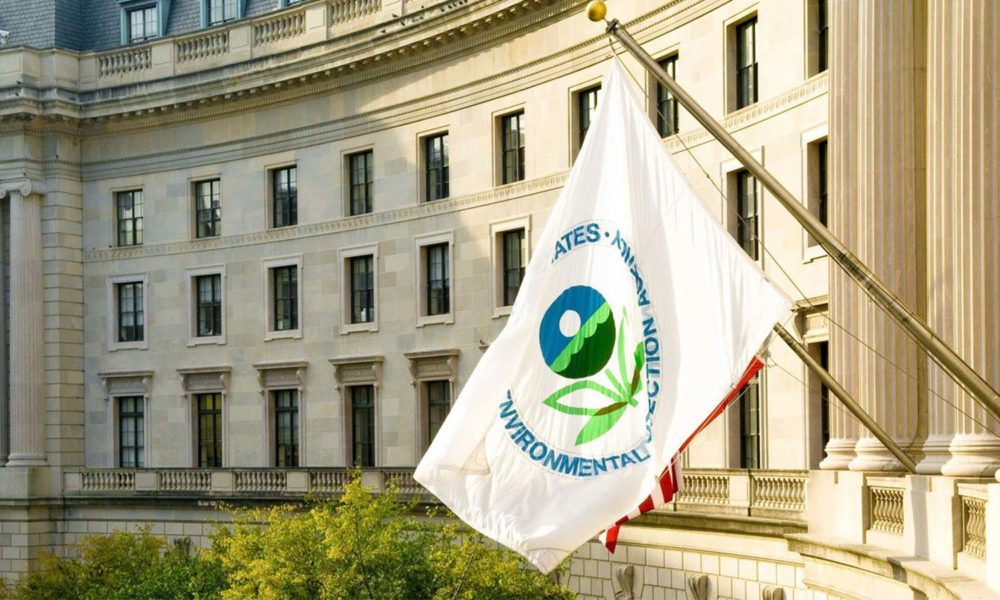On Monday, EPA’s Office of Inspector General (OIG) announced an investigation into the so-called “SAFE” rule, which rolled back Obama-era global warming emissions and fuel economy standards and will cost both consumers and the environment. This investigation is just the latest example of the many ways in which the administration’s attempts to cut corners and ignore science are being challenged.
Clean Air Act transparency
The EPA OIG investigation is centered on procedural requirements for federal rulemaking which ensure that the public has access to relevant analysis and a clear understanding of decisions made by the Agency under the Clean Air Act.
Back in May, Senator Tom Carper raised concerns about documentation missing from the finalized SAFE rulemaking, including communications between EPA technical staff and those from the National Highway Traffic Safety Administration (who oversee the corporate average fuel economy [CAFE] program), as well as documents that indicated EPA technical staff had been sidelined. This is a longstanding turf battle exacerbated by an administration touting “energy dominance” in place of a need to reduce both oil use and global warming emissions.
When the proposal was released back in 2018, similar documents showed that EPA’s own technical experts disagreed with a number of the conclusions resulting from the modeling analysis underpinning the rollback, and that staff had identified numerous fundamental flaws in the model which were left intact for the proposal despite the egregious lack of technical support.
It may be that the administration sought to quash similar publicity around the finalization, but rather than doing so by, y’know, actually following the science as required, they appear to have done so by covering it up and preventing EPA’s own experts and the public from understanding the EPA’s process and procedures. Or maybe they were in such a hurry to prevent next year’s Congress from repealing the regulation they rushed everything about the process. I mean, EPA didn’t even provide a response-to-comment document, as they have with every other regulation on which I’ve filed comments! Such a document ensures they have examined and responded to the numerous issues raised during the public comment period for a proposed regulation. This lack of due diligence and/or political interference in such a critical rulemaking is deeply troubling.

Whether the rollback stands and its final toll on consumers and the environment will likely be determined by the outcomes of a number of different legal processes — and UCS is making sure the facts are made as clear as possible to the court.
Bad science comes from a tainted process
Of course, the EPA OIG’s investigation isn’t the only action underway examining the myriad of faults in the rollback of vehicle efficiency standards—UCS is itself involved in both legal and administrative fights pushing back on EPA’s unsound rule.
On the administrative side of the equation, we have filed petitions with both EPA and NHTSA, together with other NGOs, outlining the litany of faults found in the agencies’ reasoning and analysis, urging them to reconsider the finalized rule. These errors run the gamut from manipulation of data (e.g., through cherrypicking of economic parameters inconsistent with the broader literature) to elementary errors (e.g., not adjusting factors for inflation) to blatant subterfuge (e.g., downplaying or blatantly ignoring impacts of their own analyses, including those related to gasoline prices and public health which support maintaining strong standards). These errors nearly all point in a single direction and clearly show agencies with their thumbs on the scale, pushing for a predetermined outcome regardless of what the data and analysis shows.
On the litigation front, we have filed suit over both parts of the SAFE rule (together with a number of other NGOs, along with state attorneys general that have filed their own lawsuits). The first part of the SAFE rule illegally rescinded California’s waiver to set its own more protective emissions standards under the Clean Air Act, limiting it and numerous other states to protect their own residents from the harms of fossil fuel use. This legal challenge has been moving forward, with petitioners like UCS having submitted their legal briefs outlining the merits of the case along with numerous amicus briefs (“friends of the court”) from (among others) former EPA and state regulators, members of Congress, and numerous scientists and technical organizations supporting the litigation.
On the rule itself, which sets the stringency of the standards, we have also sought judicial review of the rule. While this process has only recently begun, questions will certainly be raised about whether the agencies have upheld their statutory mandates when they drafted the rule. The answer, of course, is an obvious NO, but whether that will matter will unfortunately take time and resources to resolve, and UCS looks forward to presenting its case to the Court in the weeks and months to come.
The regulation stands for now, and that’s bad news for everyone
As these various fights work themselves through their respective channels, the sad fact remains that the rollback remains on the books. This weaker regulation affects the choices made by manufacturers on what to offer consumers, and at what price. And, as EPA’s own analysis shows, that will cost consumers hundreds of dollars more over the lifetime of every vehicle and do irreparable damage to public health and the environment.
This administration has acted irresponsibly by kowtowing to automaker pressure to severely weaken vehicle efficiency standards. They put their thumbs on the scale to get to a predetermined outcome, and all of us will suffer if these standards remain on the books. The EPA OIG investigation into the agency’s procedures is a welcome development—but no matter what, we will not rest until we exhaust every possible avenue to overturn this ridiculous and scientifically unjustified rule. The climate depends on it.

